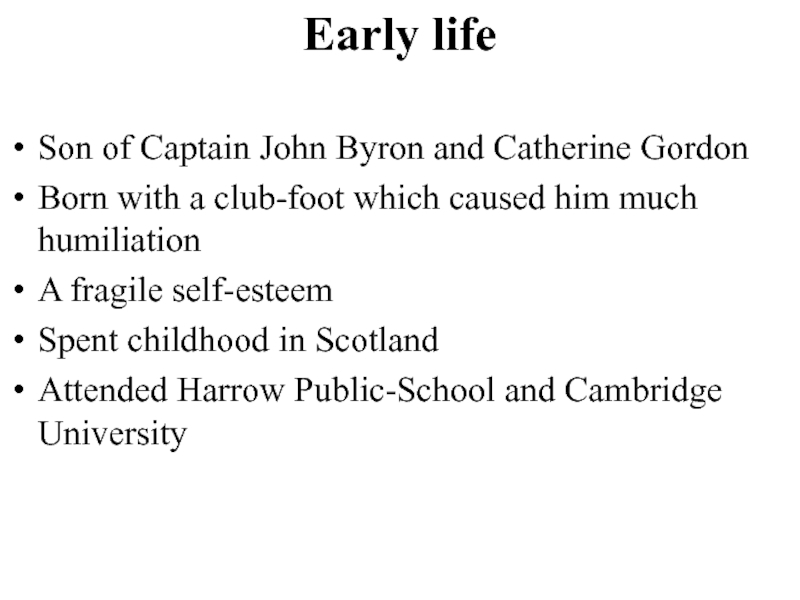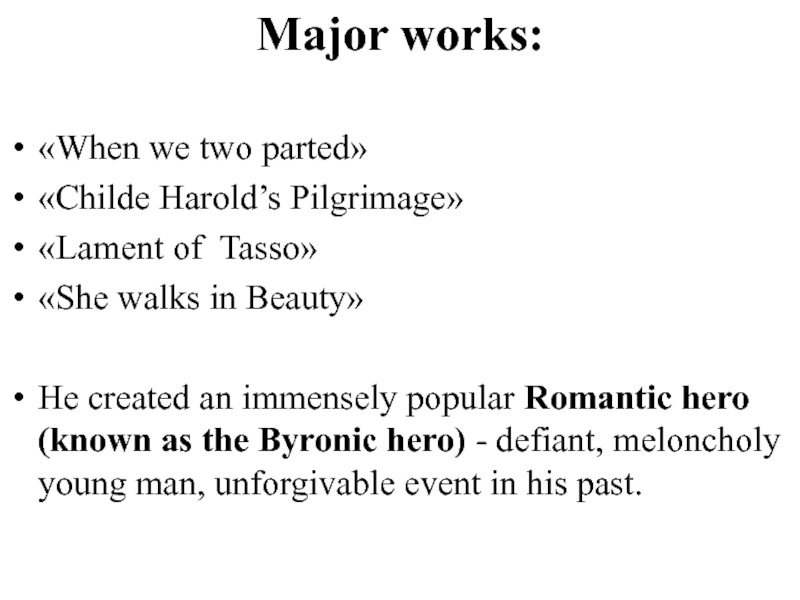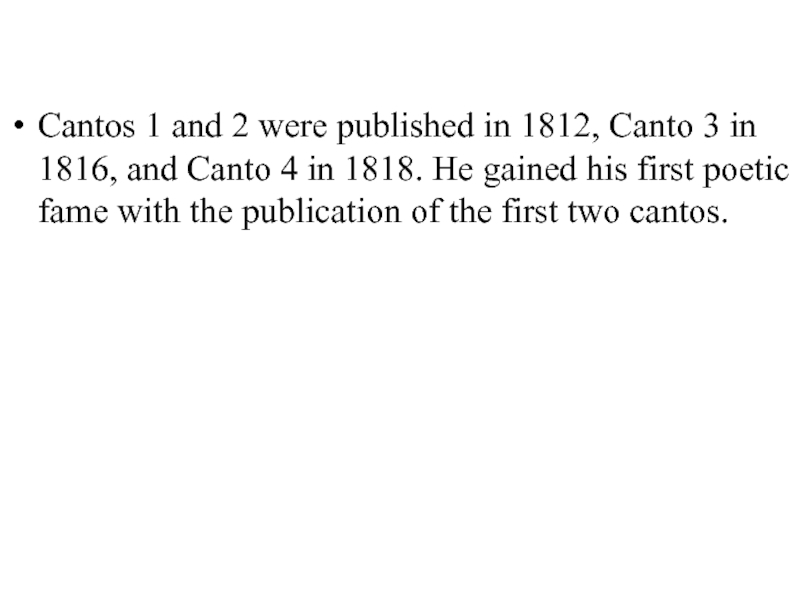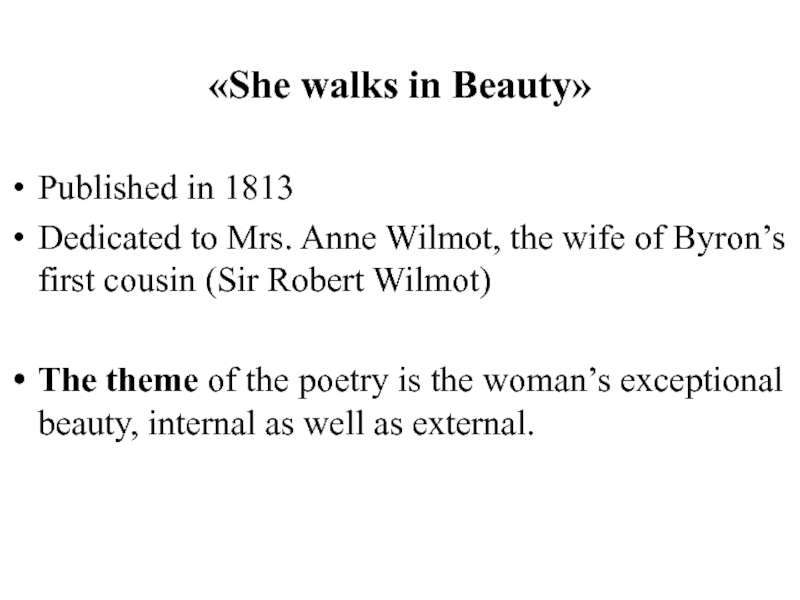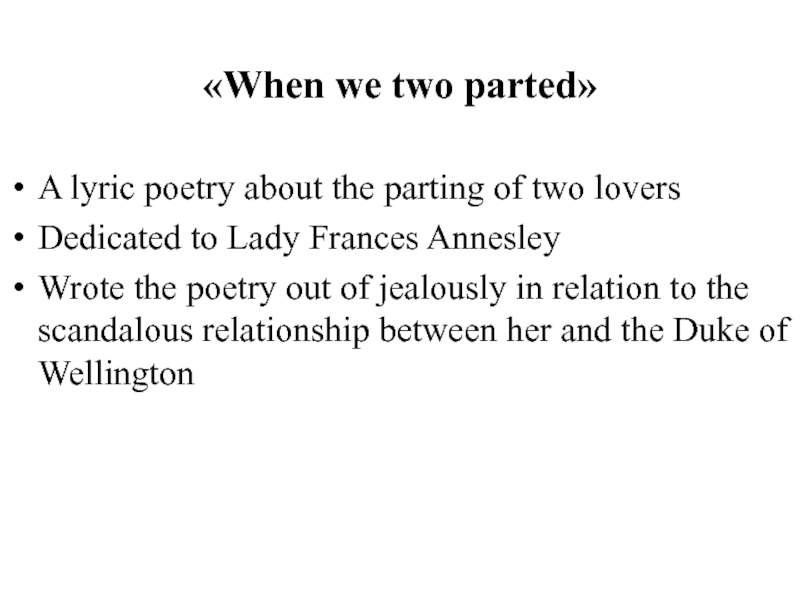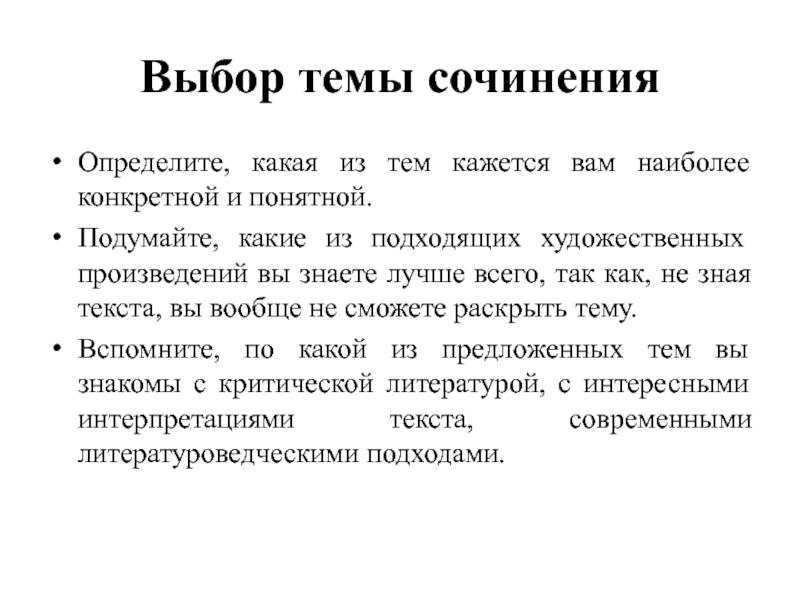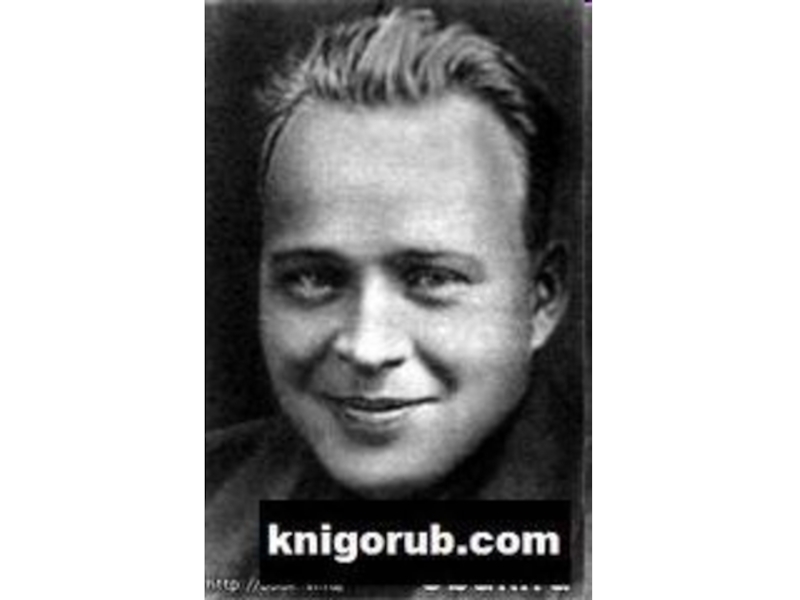- Главная
- Разное
- Дизайн
- Бизнес и предпринимательство
- Аналитика
- Образование
- Развлечения
- Красота и здоровье
- Финансы
- Государство
- Путешествия
- Спорт
- Недвижимость
- Армия
- Графика
- Культурология
- Еда и кулинария
- Лингвистика
- Английский язык
- Астрономия
- Алгебра
- Биология
- География
- Детские презентации
- Информатика
- История
- Литература
- Маркетинг
- Математика
- Медицина
- Менеджмент
- Музыка
- МХК
- Немецкий язык
- ОБЖ
- Обществознание
- Окружающий мир
- Педагогика
- Русский язык
- Технология
- Физика
- Философия
- Химия
- Шаблоны, картинки для презентаций
- Экология
- Экономика
- Юриспруденция
Lyrical hero in poetry of George Gordon Byron презентация
Содержание
- 1. Lyrical hero in poetry of George Gordon Byron
- 2. George Gordon Byron 1788-1824 Well known
- 3. Early life Son of Captain John
- 4. Major works: «When we two parted»
- 5. «Childe Harold’s Pilgrimage» Byron’s first literary
- 6. Success came in 1812 when
- 7. Cantos 1 and 2 were
- 8. «She walks in Beauty» Published
- 9. «When we two parted» A
- 10. “Always laugh when you can. It’s cheap medicine.” -Lord Byron
- 11. Thank you for attention!
Слайд 2George Gordon Byron
1788-1824
Well known poet and
politician
George Gordon Byron was
known as Lord Byron
Leading figure in
Romanticism
Слайд 3Early life
Son of Captain John Byron and Catherine Gordon
Born with a
club-foot which caused him much humiliation
A fragile self-esteem
Spent childhood in Scotland
Attended Harrow Public-School and Cambridge University
A fragile self-esteem
Spent childhood in Scotland
Attended Harrow Public-School and Cambridge University
Слайд 4Major works:
«When we two parted»
«Childe Harold’s Pilgrimage»
«Lament of Tasso»
«She walks in
Beauty»
He created an immensely popular Romantic hero (known as the Byronic hero) - defiant, meloncholy young man, unforgivable event in his past.
He created an immensely popular Romantic hero (known as the Byronic hero) - defiant, meloncholy young man, unforgivable event in his past.
Слайд 5«Childe Harold’s Pilgrimage»
Byron’s first literary triumph
Published in 1812-1818
Dedicated to Charlotte Harley
Consists
of 4 cantos
The travels of a world-weary young man
Childe – a young man who was a candidate for knighthood
Colorful descriptions of exotic nature, a lyrical exaltation of freedom, lonely hero
The travels of a world-weary young man
Childe – a young man who was a candidate for knighthood
Colorful descriptions of exotic nature, a lyrical exaltation of freedom, lonely hero
Слайд 6
Success came in 1812 when Byron published the first two cantos
of Childe Harold’s Pilgrimage. “I awoke one morning and found myself famous”, he later said.
Слайд 7
Cantos 1 and 2 were published in 1812, Canto 3 in
1816, and Canto 4 in 1818. He gained his first poetic fame with the publication of the first two cantos.
Слайд 8
«She walks in Beauty»
Published in 1813
Dedicated to Mrs. Anne Wilmot, the
wife of Byron’s first cousin (Sir Robert Wilmot)
The theme of the poetry is the woman’s exceptional beauty, internal as well as external.
The theme of the poetry is the woman’s exceptional beauty, internal as well as external.
Слайд 9
«When we two parted»
A lyric poetry about the parting of two
lovers
Dedicated to Lady Frances Annesley
Wrote the poetry out of jealously in relation to the scandalous relationship between her and the Duke of Wellington
Dedicated to Lady Frances Annesley
Wrote the poetry out of jealously in relation to the scandalous relationship between her and the Duke of Wellington


